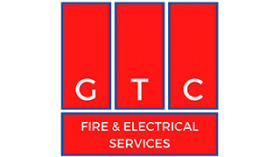Safeguarding Commercial Fire and Electrical Safety Across South England.
Managing LED expectations
 ‘LEDs are the future of lighting’ is the mantra we hear not just within the lighting industry and trade press but the message is beginning to appear in the consumer media. Is it true? It probably is for the foreseeable future and they are remarkable little things which are still improving almost by the day both in terms of output and energy efficiency while prices are falling at a significant rate. There is little doubt that good quality LEDs purchased from a reputable manufacturer will offer a client an efficient and effective lighting system but all is not quite what it seems and for the unwary there are a number of potential pitfalls.
‘LEDs are the future of lighting’ is the mantra we hear not just within the lighting industry and trade press but the message is beginning to appear in the consumer media. Is it true? It probably is for the foreseeable future and they are remarkable little things which are still improving almost by the day both in terms of output and energy efficiency while prices are falling at a significant rate. There is little doubt that good quality LEDs purchased from a reputable manufacturer will offer a client an efficient and effective lighting system but all is not quite what it seems and for the unwary there are a number of potential pitfalls.
LEDs are ideal for certain applications and at the moment fluorescents and other technologies have their own areas of suitability. Of course this balance will change over time as LED luminaire manufacturers concentrate on adapting LEDs to new applications and as LED manufacturers steadily improve their products.
LED retrofits
Take, for example, fluorescent tube replacements. There have been LED retrofit solutions in place for a while now and many building management companies are replacing whole schemes without consideration of some key issues. Firstly, one that is almost regarded as a given in this age, are they safe? Well that is not so certain as products have found their way onto the market where the exposed pins at one end of the tube become live when the other end is inserted into the fitting. This is fundamentally dangerous and any such products should be identified and removed before someone is hurt. Secondly, most of the tube replacement options require the fixture to be re-wired, usually bypassing the ballast. In this case the original manufacturer cannot be expected to continue to stand by their CE mark declaration, someone has tampered with their product. Who is responsible? The contractor won’t want to take on that liability so who does? Thirdly, most luminaires for tubes have optical components to distribute the light in the way the designer intended whereas LED tubes either have their own built in optics or none at all. Leaving aside energy savings for the moment, where does this leave the performance of the lighting scheme which had been carefully calculated by the original designer? Are the installers ensuring that the scheme delivers the same light distribution and colour as originally intended? In many cases the answer is no.
Finally comes the manufacturers claim for the performance of that LED tube which has been one of the key drivers in persuading the client to install them. Does it really deliver the equivalent output to the tube it is replacing and how has that been measured? A lux meter popped under the band of higher intensity output of an LED tube might impress but move it just a metre to one side and see if it is equivalent then. Comparing LEDs with other light sources can be like comparing apples and bananas.
The case for buying the tubes will have been made almost entirely on claimed equivalence, lower energy consumption and extended product life leading to lower maintenance. All of these rely on the manufacturer supplying data which might well be flawed. In order to be certain the claims are genuine always ask for a copy of the independent test report from a notified body that should be available to back up these claims.
All LEDs generate heat so good thermal management is essential to ensure the LED operates at its optimum temperature and therefore obtains the full life potential of the product. If this has not been conducted properly early failures will be inevitable and the scheme savings calculations are immediately awry.
Performance
Like most technologies LED performance degrades with age and the quoted life of a product will be determined by the percentage of original output remaining. If a building manager agrees to replace, for example, LED tubes with a claimed life of 6 times that of its equivalent fluorescent tube he should bear in mind that whilst each time he replaces a fluorescent tube the light output jumps back up to 100%, the ageing LED installation will be steadily degrading over the life of 6 fluorescents. For this reason it may be considered necessary to opt for a higher initial output to ensure at the end of life the scheme is still generating sufficient light.
Here I have used LED replacements for fluorescent tubes as an example but the same caveats apply to any LED product. I have seen GU10 replacement lamps where the need to pack the necessary electronics into such a small space has produced a safety issue in terms of creepage and clearance distances for live parts leading to a potentially unsafe product where the metal body could become live. I have also seen decorative luminaires where the designer has been more interested in the benefits of size that an LED can bring than its performance criteria. The result has been a product with no heat sink and an expression of surprise from the manufacturer when the long lasting LED has failed after just a few hours. I have certainly seen a large number of poor quality LED products where I don’t even need a lab test to tell me that the equivalence they are claiming against other technologies is creative to say the least.
After some 25 years or more of compact fluorescent lamps in the marketplace they are still unloved by consumers. The perception that they are slow to start, flicker, emit a cold blue light and don’t fit any light fittings is still with us. All of this stems from the early CFLs which did suffer these problems and the consumer has a long memory. If we are not careful we run the risk of tarring the LED with the same brush unless poor quality products are removed from the market with a set of sufficiently robust standards and strong market surveillance.
Don’t let this put anyone off using LEDs for the right application, just be sure that all these criteria are considered over and above the energy benefits and buy quality products from quality manufacturers who can back up their claims with third party data.
Further information
A joint industry guide on specifying LEDs is available on the Lighting Association website at www.lightingassociation.com
Company Focus
Event Diary
An essential date in the calendar for those responsible for homeland and global security; International Security Expo returns to Olympia in London on 30 September & 1 October 2025.
Every sport, from grassroots football to world-class tournaments, depends on one constant: high-quality playing surfaces and well-maintained green spaces.
Tickets: Free registration available at www.retailscl.com
The Retail Supply Chain & Logistics Expo is the UK’s leading event for retail supply chain and logistics professionals, showcasing the latest innovations in fulfilment, 3PL, AI-driven automation, and warehouse technology.
Supplier Profiles
Bauder Accepts Keys to its New UK Distribution Centre at Gateway 14
Bauder marked a major milestone in its UK expansion with the official handover of a brand
Words of World: Bridging language barriers with excellence
At Words of World, we specialise in professional translation and interpreting, d
Latest Features
The British Institute of Cleaning Science (BICSc) and the Cleaning & Support Services Association (CSSA) have successfully completed a groundbreaking project aimed at exploring the future of cleaning. This collaboration marks a significant milestone in the cleaning industry, reflecting a shared commitment to embracing innovation with confidence.
The Crown Commercial Service’s (CCS) new framework on Language Services (RM6302), dealing with translation, transcription and interpreting, is live, running from 7th May 2025 to 6th May 2028.










